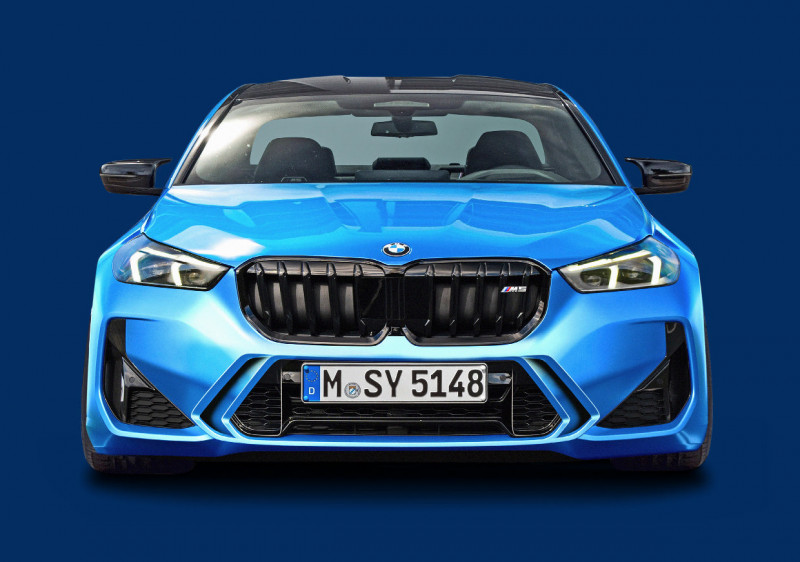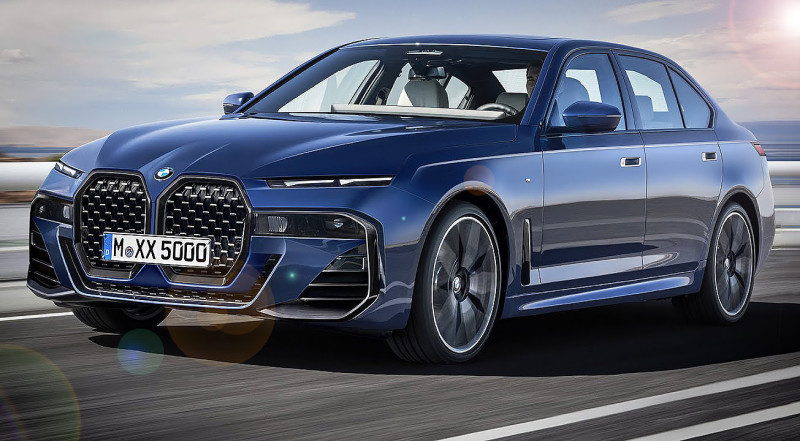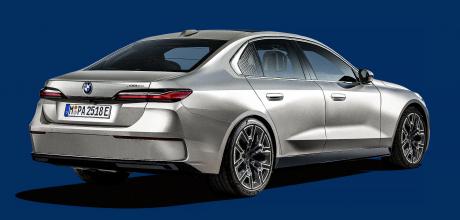2024 BMW i5 and M5 G60/G61: petrol, diesel, hybrid, full electric, and return of the M5 Touring
Petrol, diesel, hybrid, full electric, and even the return of the M5 Touring – the new i5/5-series line-up has the lot.
ALL BETS ARE ON BMW 5-SERIES
something for everyone
The surprise isn’t that BMW is hedging its bets with the new 5-series – that much would have been pretty obvious to anyone who’s been casting even the most cursory glance in the direction of Munich lately. The surprise is just how comprehensive the new line-up will be. As well as pure electric, there will be plug-in and mild hybrids fuelled by petrol and diesel. There will be all- and rear-wheel-drive versions. There will be further steps towards self-driving, but there will also be driver-focused M5 saloon and – for the first time in more than 20 years – estate versions.

Twin-turbo V8 gets electric boost in next M5.
With the G60 (saloon) and G61 (estate) the 5-series, BMW is making it clear that however many SUVs it launches, they are as well as these traditional heartland body styles, not instead of. And simultaneously it’s making it clear that your choice of power source doesn’t have to dictate your choice of body.
While Mercedes has opted to create a unique but polarising lowdrag design for its electric cars, BMW has – with the exception of the standalone electric-only iX – embarked on a different philosophy. To keep costs down, make lifecycle adjustments as painless as possible and ensure maximum production flexibility, all drivetrain options are to be clad in the same one-style-fits-all body. That could even include the hydrogen fuel cell currently earmarked for the X5.

In essence, this approach mimics the Russian-doll strategy chosen for the new 7-series/i7, the X3/iX3 and the future X5/iX5 to name only the most prominent pairs. Like the 7-series/i7 (with their 0.24 drag coefficient), the upcoming 5-series/i5 won’t be quite as slippery as the wholly bespoke Mercedes EQS (with its Cd of 0.20) and EQE (0.22). But then it won’t look like a panda jellyfish on wheels, either.
A designer from Munich sums up the logic: ‘Since it is unclear when exactly EVs will take off, in which markets and with what kind of volumes and growth rates, or how the combustion engine is going to fare in the future, maximum aerodynamic efficiency and minimum visual differentiation is the safest short- to mid-term bet.’
Unlike the 3-series, which switches to the all-new Neue Klasse matrix for model year 2025, the 5-series replacement is based on an evolution of the familiar CLAR cluster architecture. Just as the i4 is in essence a mildly restyled 4-series Gran Coupe stuffed with batteries and one or two e-motors, the modular DNA of the next 5-series is sufficiently flexible to generate almost a dozen different petrol, diesel, PHEV and battery-electric versions. Significantly, the electric i5 will also be available in estate form, putting it in head-on competition with the Audi A6 e-Tron Avant and the Volkswagen ID. Aero Sportwagon. Mercedes will not offer a battery-powered estate version of the new E-Class.
We expect two diesel-engined variants, the 520d making around 195bhp and the 340bhp 530d, both in rear-drive and all-wheel-drive guises. On the petrol front, the entry ticket to the 5-series is the 520i rated at 190bhp. One rung up sits the 255bhp 530i. The top-of-the-line 48-volt mild-hybrid model is the 370bhp 540i, using BMW’s iconic straight-six. Expect three plug-in hybrids with a minimum electric-only range of 50 miles: 530e (292bhp), 550e (480bhp) and M560e (565bhp).
Isn’t that last one bordering on M5 territory? True, but the next M5 in the works at M division will be equipped with the same brawny 4.4-litre twin-turbo V8 plus 25.7kWh battery and e-motor combination as the XM. The 5-series range-topper coded G90 in saloon and G99 in Touring form musters 653bhp, sources say. And there may be even more to come, like the M5 CS version destined to share its 750bhp drivetrain with the Label Red version of the XM SUV.
Although the last M5 Touring sold only 1025 units, and despite the current global shrinking of estate-car sales, BMW firmly believes the new Touring will be a big fish in that small pond.
The i5 will likely be offered as single-motor 40 eDrive, dual-motor 50 xDrive and beefed-up M60 xDrive. The corresponding power output numbers are currently understood to be 350, 450 and 550bhp, but this may yet change.
What the next 5-series does not offer is a manual gearbox, four-wheel air suspension and a V8 engine without a 200bhp electric back-up unit. Instead we’re promised an improved version of all-wheel steering, active anti-roll bars with automatic ride-height control and more powerful brakes, interacting with the various electronic systems to recycle surplus energy.
The new M5 will most likely again offer a choice of steering and braking calibrations in addition to the usual list of dynamic adjustment opportunities. Various packs will be available, as well as individual options, giving buyers choices including bigger wheels (19 to 21 inches), adaptive suspension and carbon-ceramic brakes.
The styling of the new 5-series features, like the 2025 3-series, a relatively wide shark-nose grille flanked by high-tech headlamps. Without the vertical kidney divider and the roundel badge above it, there’s a strong hint of Skoda about the nose.
At the back there’s a full-width light bar, bold bumpers without visible tailpipes (except for M and M Performance models), wider track and bigger tyres. It’s a low-risk design in a market that tends to punish high-risk solutions. The optional glowing grille is expected to feature different mood variations, ranging from subdued to sporty.
Inside, the new 5-series was clearly inspired by the latest 7-series. Of particular note are the use of crystal-style controls for seat adjustment, iDrive and gear selection, the increased choice of man-made materials like the Veganza trim instead of traditional wood and leather, and the clever new head-up display, which runs along the bottom of the windscreen. Cheaper than the bulky and heavy conventional projector set, this slim and light alternative could well take future instrument binnacles down a more pragmatic avenue.
Lifted straight out of the 7-series, the Operating System 8 fitted to G60/61 focuses on touch and voice control. It abandons almost all knobs, switches and thumbwheels in favour of a large curved display, a full-width interaction bar and optional augmented-reality displays within the driver’s core field of vision. Old die-hards may struggle to cope, but BMW is confident the rest of the population will lap it up. The choice of driver-assistance systems continues to get broader and more complex. Motorway Assist takes the sting out of slow-moving dual-carriageway traffic. Level 3 autonomous driving – where the car can drive itself in some situations, but the driver needs to be ready to resume control – will become available in certain European markets by the middle of 2023. BMW has, however, quietly withdrawn even a tentative intro date for Level 4 (driver largely unnecessary), while Level 5 (steering wheel and pedals no longer required) has moved even deeper into the crystal ball.
But some new assistance systems make their debut on the 5-series. It can memorise select parking manoeuvres and re-execute them on demand – even via a remote-control app while you’re outside the car. The car can take care of all steering, braking and throttle actions when this parking system is active, and can switch between forward and reverse gears itself. Another option will be Active Speed Limit Assist, which extends the scope of acceleration, deceleration and steering actions, although it’s not close to a full autopilot system. G60 production starts in July, with the Touring due to go into production early in 2024, and some of the many combinations not reaching showrooms until 2025.
The 5-series and i5 are to be introduced simultaneously in all major markets. As before, only China gets the long-wheelbase saloon (G68) in both combustion-engined and electric guise.
What about an electric M5? Theoretically, BMW could extend its parallel-universe principle to the M model. After all, the 650bhp i7 M70 is only nine months off, and its scalable powertrain could be shoehorned into the G60 matrix without much hassle.
That’s the smart thing about Munich’s current open-technology approach: you can go all-in when the time is right, you can hang on a bit longer with more conservative options, or mix and match until legislation intervenes or the rate of electric adoption changes.
NEED TO KNOW
- What is it? The next 5-series, and an epic base-covering exercise from Munich. Likely whatever you want, the 5 will offer it
- Tech? Sweet engines, digital-done-right interiors and compelling electrification in the form of the i5
- Aimed at? Absolutely everyone
- When can I have one? 2023 for the 5-series/i5; year after for the M5
How do you like your progress?
I like to think of myself as a progressive, future-facing individual. But I find myself drawn to BMW’s bet-hedging approach, rather than Merc’s boldly electric, twin-stream philosophy. Cars like the polarising first Mirai and, on the flip-side, the riotous success of Tesla’s derivative Models S and 3, would tend to suggest buyers aren’t keen that their car’s aesthetic is a reflection of its powertrain. But while a hybrid V8 M5 appeals more than a four-cylinder AMG C63 S, the extra weight and complexity feel like hefty prices to pay for a power increase no sane individual could claim to need. But buyers do like PHEVs, with their bullshit WLTP figures and guiltsalving electric-only range.


